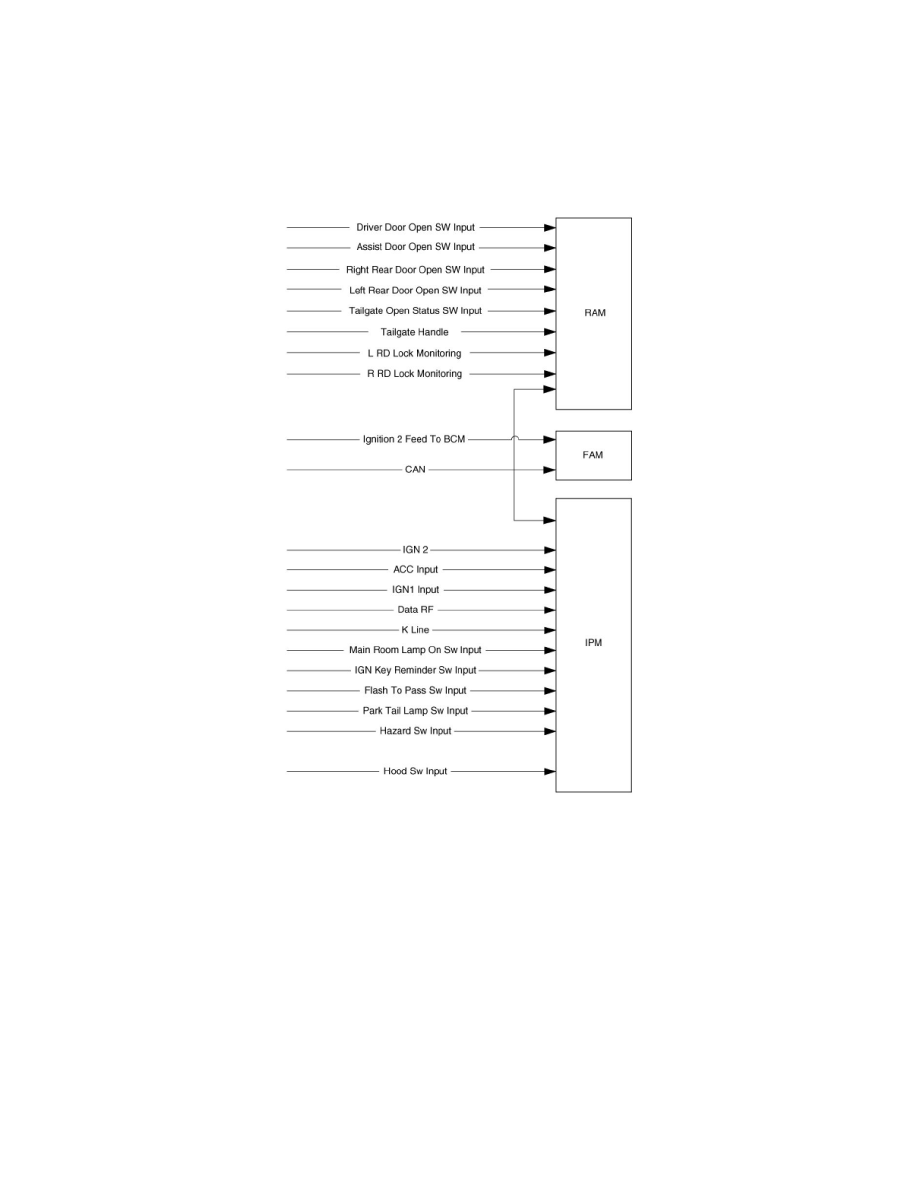Borrego 2WD V6-3.8L (2009)

tool is connected.
Sequence for entering low power mode for one module is as follows:
Check that all the module functions are in a state where they can enter low power mode.
If all the module functions are in a state where they can enter low power mode for 10s, the module sends a CAN message informing that it is ready to
enter low power mode.
When all the modules on the network are ready to enter low power mode, the IPM sends a CAN message authorizing the CAN to be shut down.
Once the CAN network is in low power mode, each module enters low power mode.
This process can be interrupted at any time to go back to normal mode when a wake up event is detected.
The transition process from normal to low power mode is the same whether full low power or intermediate low power mode is being entered.
Intermediate Low Power Mode
Description
Intermediate low power is a state in which the modules lower their power consumption as much as possible. In this mode, one or several components
connected to the modules are active. The modules reduce their power consumption but cannot achieve full low power mode because of those external
components that need to be maintained in powered state.
Safe and Rescue Mode
Safe mode
Description
There are 2 safe modes:
-
Software safe mode;
-
Hardware safe mode.
The software safe mode is a transition state entered as soon as one of the CAN signals monitored is lost. It is built in such a manner that the current state
of the lighting on the low beams and tail lamps is kept. The rest of the functions follow their own default behavior.
This transition state is mainly used to avoid going back and forth between the normal mode and the rescue mode in case of sporadic trouble on a signal.
This will avoid having the low beams and tail lamps being turned ON/OFF for small periods.
